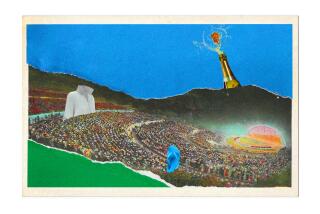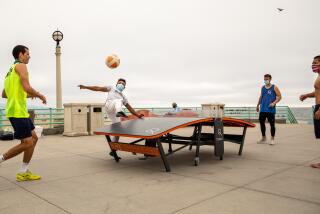String pinsetters are coming to bowling alleys across America, replacing old, mechanical pinsetters — and antagonizing some bowlers.
Something mysterious awaits Kevin Mills at the far end of the bowling lane, down there in the shadows.
It doesn’t matter that his fingers find just the right grip on the ball. Or that he takes three careful strides on the way to a smooth throw, finishing in a classic bowler’s pose. Something is making him uneasy.
Sure enough, it sounds weird when the ball hits home, more clattering than thunderous. The pins don’t scatter like normal; two remain standing.
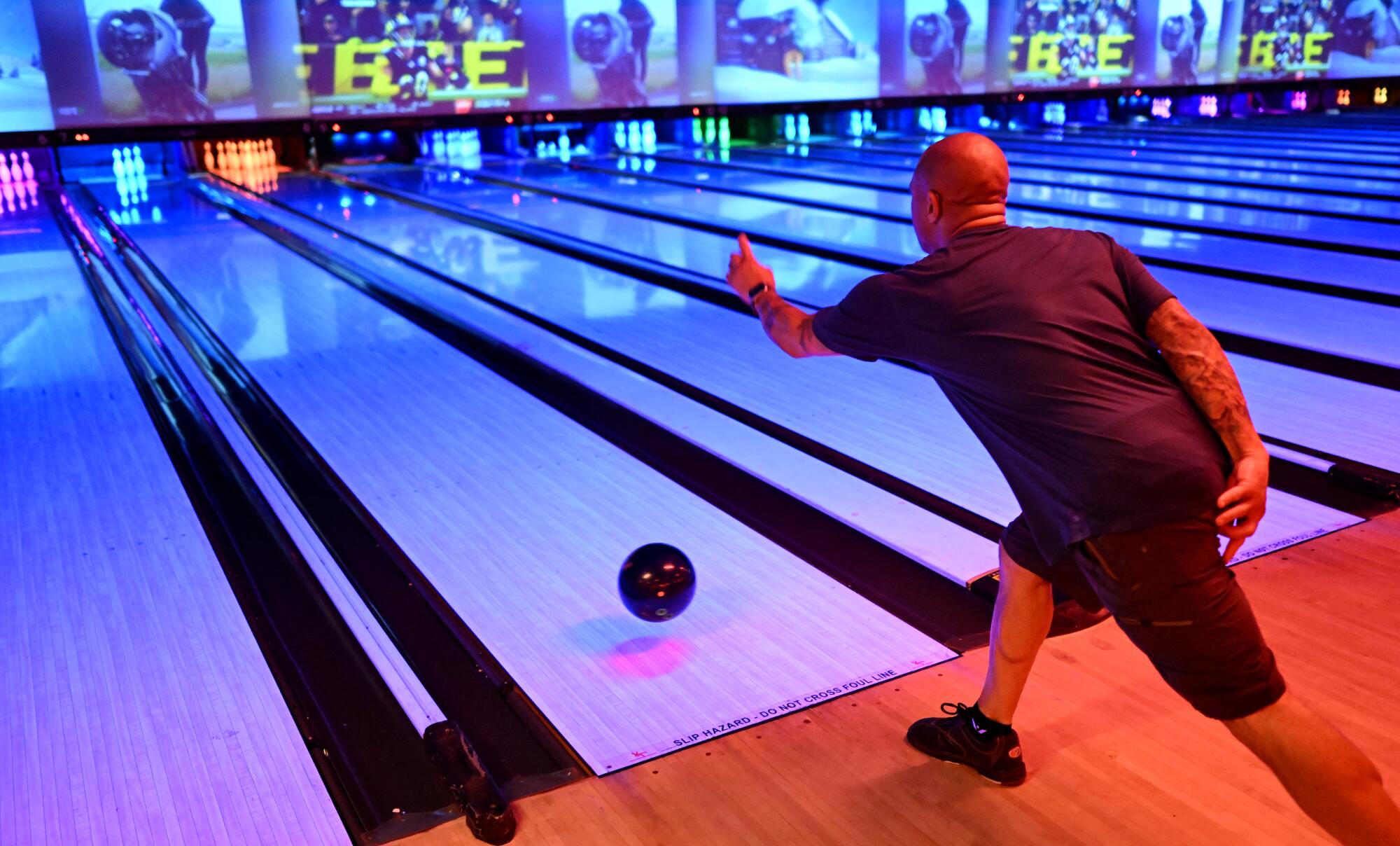
“That should have been a strike,” Mills says.
A technical revolution is changing the game he grew up with. Even if you don’t care about bowling, his vexation is understandable. It’s all about progress, vinyl records giving way to streaming, handwritten letters replaced by text messages, that sort of thing.
Bowling alleys across the country are ditching traditional pinsetters — the machines that sweep away and reset pins — in favor of contraptions that employ string. Think of the pins as marionettes with nylon cords attached to their heads. Those that fall are lifted out of the way, as if by levitation, then lowered back into place after each frame.
String pinsetters mean big savings, maybe salvation, for an industry losing customers to video games and other newfangled entertainment. That is why the U.S. Bowling Congress recently certified them for tournaments and league play.
But there is delicate science at play here. Radius of gyration, coefficient of restitution and other obscure forces cause tethered pins to fly around differently than their free-fall counterparts. They don’t even make the same noise.
Faced with growing pushback, the bowling congress published new research this month claiming the disparity isn’t nearly as great as people think. Mills seems dubious on a recent night when he visits a San Fernando Valley bowling alley that has made the switch.
“The physics are entirely different,” he says. “It’s a big deal in our world.”
First came pinboys.
These actual humans — mostly teenagers — did the sweaty work of scrambling around behind the lanes, gathering and resetting by hand. Old black-and-white photographs show them dressed in suspenders and snap-brim hats.
After World War II, machines took over. Even as automated pinsetters evolved over the years, they remained Rube Goldberg devices, made of gears, levers and spinning mechanisms that needed lots of electricity, full-time mechanics and expensive replacement parts.
None of this mattered during flush times. In the 1960s, the U.S. had about 11,500 bowling alleys, or “houses,” according to industry reports. Such establishments were referred to as “the poor man’s country club.”
Though the sport has remained popular, with about 67 million Americans playing at least once a year, current demand supports only 3,000 or so houses.
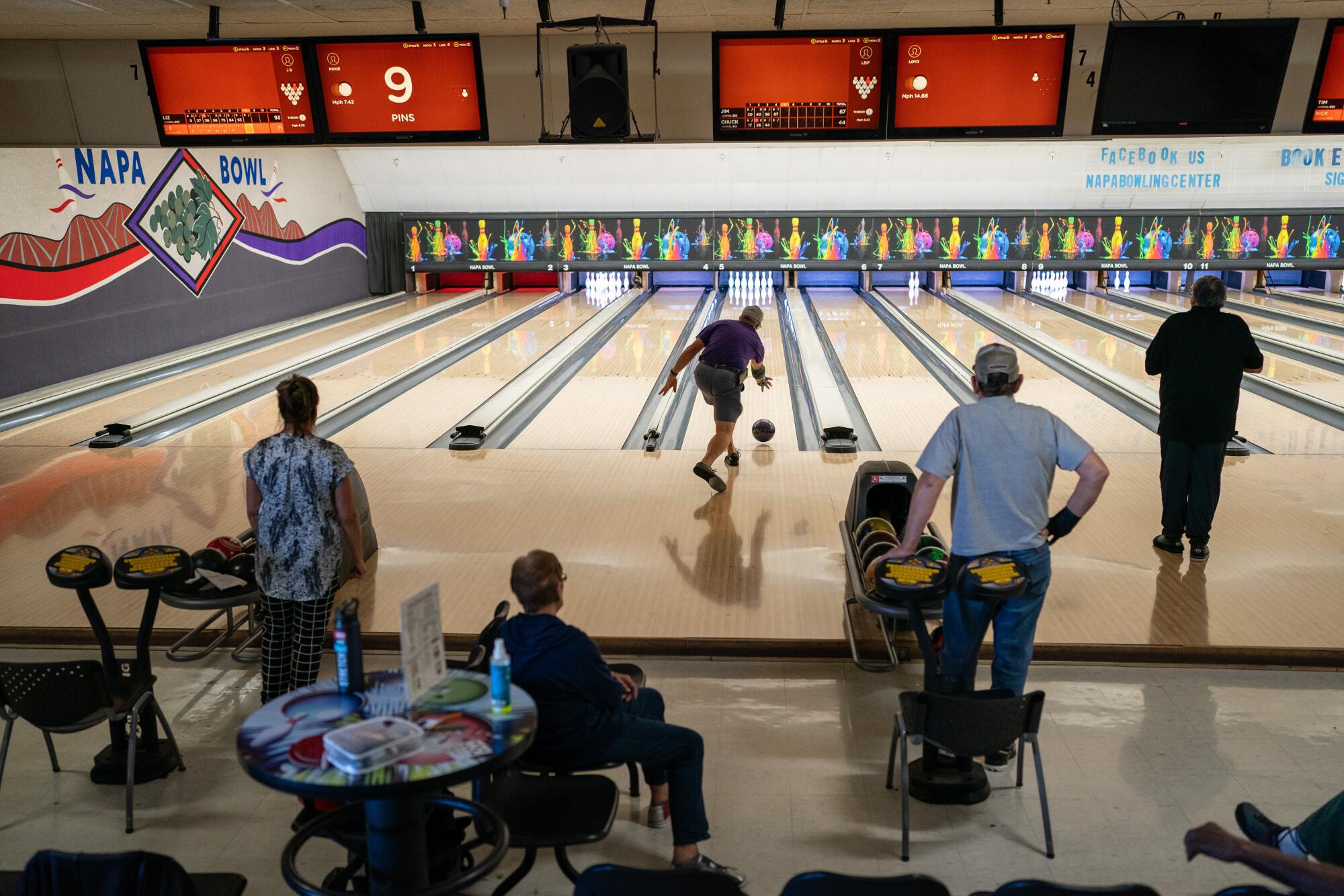
“Some of the decline has to do with cost to operate and square footage,” says Chad Murphy, the bowling congress’ executive director. “If [houses] can lower their costs, that’s a good thing.”
European bowling alleys have used string pinsetters for decades because they require less energy and maintenance. All you need is someone at the front counter to run back when the strings tangle.
L.A. has a multitude of vacant lots that might be used as temporary, secure places to get people off the streets. Simple enough, right?
But Americans have long treated this technology as a gimmick, relegating it to arcade-style games in restaurants and bars. The bowling congress knew that conferring official status meant confronting a stigma.
“I always like to say all bowling is good bowling,” Murphy says. “But, at the same time, beauty is in the eye of the beholder.”
At the Valley bowling alley, the first hour doesn’t go so well for Mills, his wife Helena and a friend named Jimmy Hayward, who play in the same league team at a different spot.
Even their hardest throws fail to produce the “explosion” bowlers crave, the pins merely wobbling and skittering. Each near-miss prompts second-guessing.

That was in the pocket, right? … Yeah, the pins should have kicked more … I thought I threw it hard enough … Weird.
Sixty feet away, in the dim light where the pins stand, those black strings tend to disappear. Hayward, a big man with tattooed arms and a spiked wrist brace, suspects a conspiracy: “They don’t want us to see what’s going on down there.”
Between rolls, a partition flips down to conceal the process of clearing and resetting. Helena paraphrases the “Wizard of Oz,” saying: “Pay no attention to the pins behind the curtain.”
Bowling officials named the robot pinsetter after legendary pro Earl Anthony. Then they used the letters — E.A.R.L. — to create something more technical-sounding. Enhanced Automated Robotic Launcher.
Though this sport conjures images of the common man — Ralph Kramden, Archie Bunker and the Dude from “The Big Lebowski” — E.A.R.L. is a star at the bowling congress’ research center in Arlington, Texas. Its mechanical arm, powered by hydraulics and air pressure, has rolled thousands of test balls from every angle, with various speeds and spins, on string-equipped lanes.
Early results were not encouraging.
“It wasn’t a sport,” Murphy says. “It was an arcade game.”
Researchers toyed with cord length and modified the walls surrounding the deck area, where the pins stand. They found a configuration that resulted in 7.1% fewer strikes and about 10 pins fewer per game as compared to bowling with traditional pinsetters.
The Enhanced Automated Robotic Launcher, or E.A.R.L., which simulates different pin placement and ball-throwing scenarios, was used to develop string pinsetter technology.
That was close enough for certification, but not close enough for purists. Officials subsequently enlisted 500 human bowlers for more testing and, this time, reported finding “no statistically significant difference.”
But hundreds of test participants commented that bowling on strings felt “off.” The pins seemed less active, they said. There were occasional spares whereby one pin toppled another without making contact, simply by crossing strings.
Nothing could be done about the muted sound. It’s like hearing a drum roll — the ball charging down the lane — with no crashing cymbal at the end. That crescendo and climax, Mills insists, is a visceral part “of the experience of smashing pins with a heavy ball.”
Napa Bowl is decidedly old school, the kind of place that prides itself on bustling league nights and reasonably priced cocktails. The Sousa family has run the 32-lane house in Northern California since it opened in 1946.
With other mom-and-pop operations disappearing, many snapped up by a massive national chain called Bowlero, the Sousas took a hard look at their traditional pinsetters.
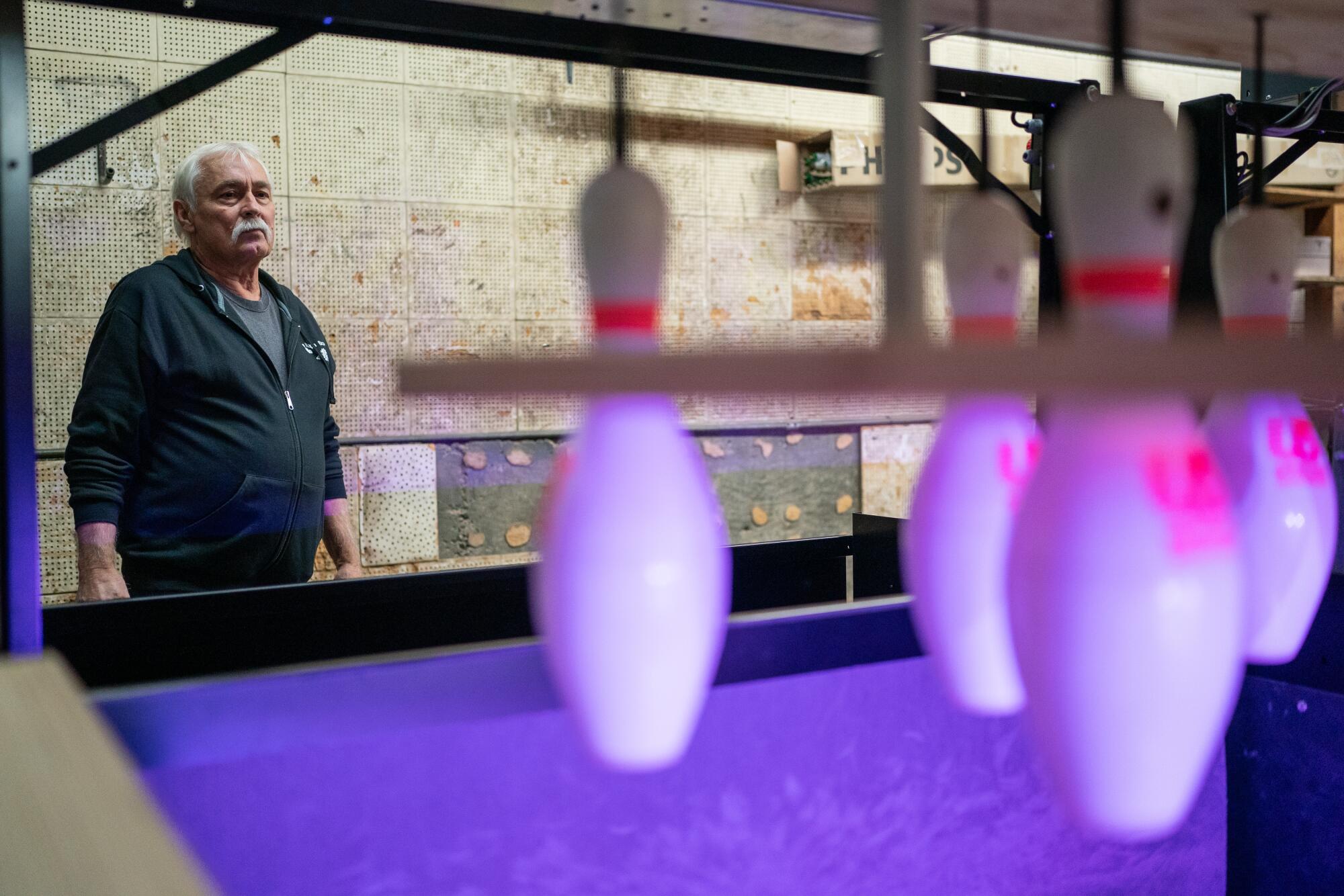
“It was like 32 automobiles running all day,” says Dan Sousa, son of the original owner. “We had a full-time mechanic and were spending up to $3,000 a month on parts.”
In September, Napa Bowl spent nearly $1 million to install strings. Sousa expects the investment to pay off over time; his electricity bill should drop by half and there is no need for a full-time mechanic because the new pinsetters have only 75 working parts, hundreds upon hundreds fewer than the old ones.
Skiing within the City of Los Angeles? That’s what five friends accomplished Sunday when they descended the slopes of the city’s tallest mountain.
Making the switch reminds him of the late 1990s when, like much of the industry, he converted from wood lanes to a more durable synthetic. He says: “Old-time bowlers can get pretty cranky.”
Or worse.
“There were people who flat-out said no way,” says Dan Roberts, a regular at Napa for decades. “I have one very good friend who refuses to bowl here anymore.”
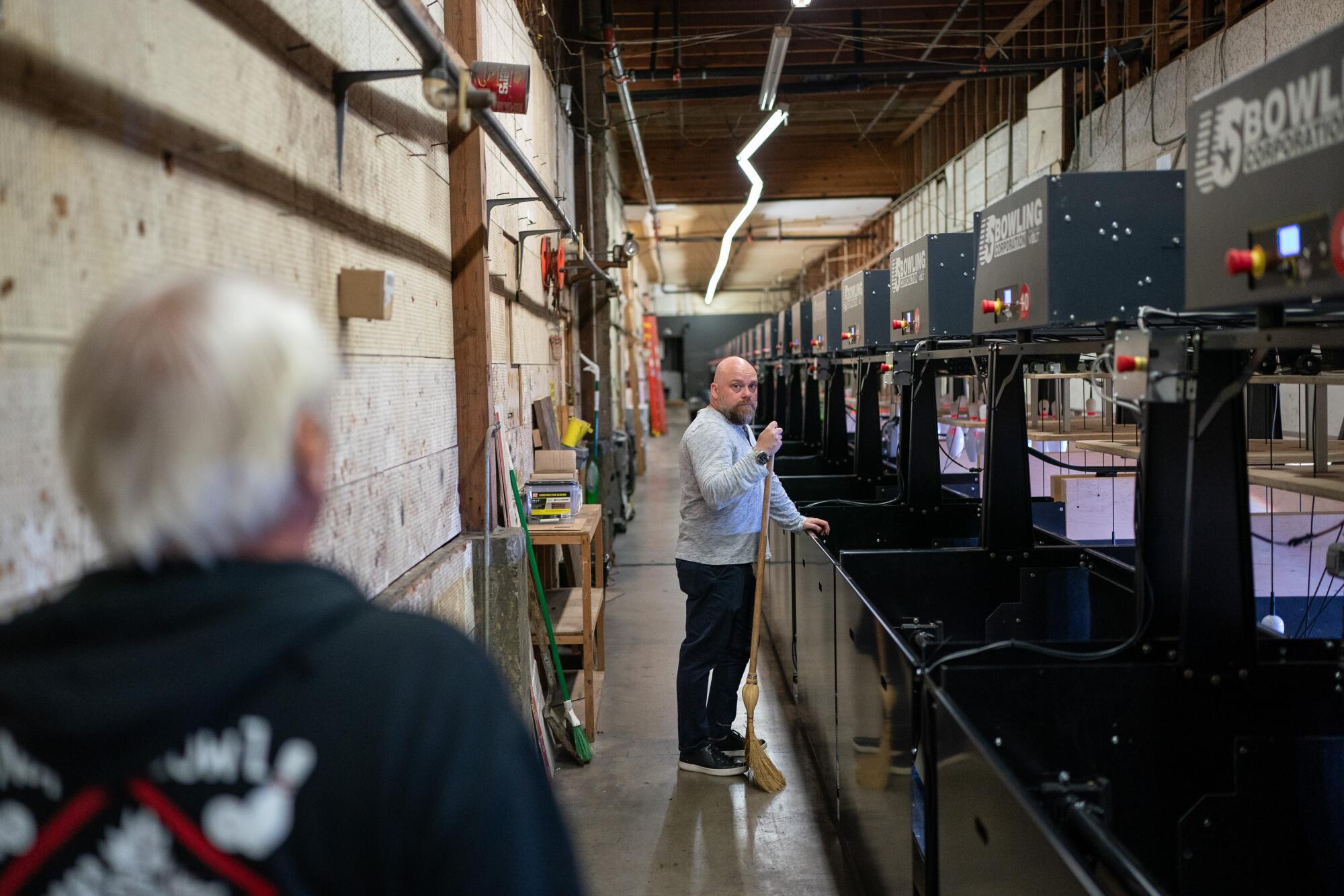
The new setup affects each bowler differently, depending on his or her style of play.
“I don’t find that big a difference,” says Roberts, who throws hard enough to get decent pin action on strings. “But we have some opinionated bowlers in my league … we’ll see how it goes.”
Then again, Roberts is 6 feet 8 and 264 pounds.
After knocking down the 8-pin for a spare, Hayward slumps in his seat and says most people don’t understand this sport.
Bowlers spend years honing their grip, perfecting each step of their approach, their swing path. Different situations require different types of throws.
Unlike Mills’ concise delivery, Hayward has developed a looping motion, flipping his fingers to impart extra hook, sweeping his hand up past his ear. He fears the bowling congress is prioritizing revenue over the nuances of the game.
“What is this?” he asks. “A sport or an 8-year-old’s birthday party?”
His question, however flippant, is fundamental to the controversy.
In better times, 7 million Americans took bowling seriously enough to join weekly leagues, often playing for office or factory teams. “Bowling for Dollars” was a popular game show. Network television covered the pro tour on Saturday afternoons, making stars out of players such as Anthony and Dick Weber.
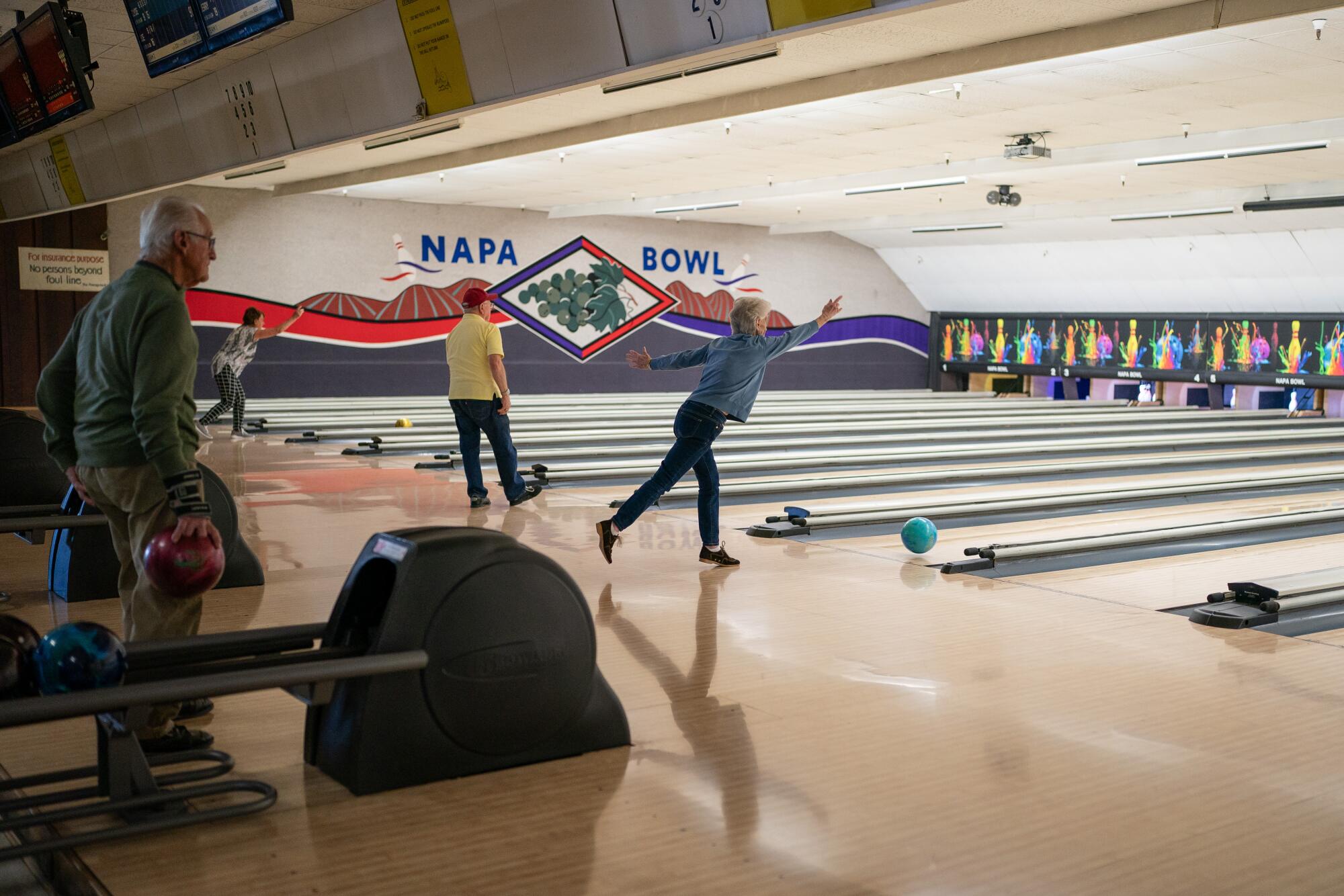
Now, with the sport relegated to cable, league participation stands at 1.2 million and the industry has shifted its focus to what Murphy calls “nontraditional customers” — shorthand for children attending birthday parties, high school kids on Friday nights and adults looking for one-off fun.
“Their goal is to have people drinking beer and eating pizza,” complains Ed Williamson, a longtime pro shop owner in Pasadena. “They make more money if you have to rent shoes.”
Reinventing themselves as “entertainment centers,” bowling alleys have cranked up the music, expanded their arcades and added walls of video screens. Black-light bowling with glow-in-the-dark balls is a weekend staple. Bowlero has led the way.
In the era of climate change and drought, green grass has become a public scourge. Still, I went looking for reasons to keep my traditional frontyard.
The corporation, which did not respond to multiple interview requests, dates to the late 1990s when entrepreneur Tom Shannon sought to revolutionize the marketplace with a strategy that featured retro decor, high-end food and bars that serve “signature cocktails.”
A string pinsetter test on a 7-10 split. Critics say the strings alter the action of the pins.
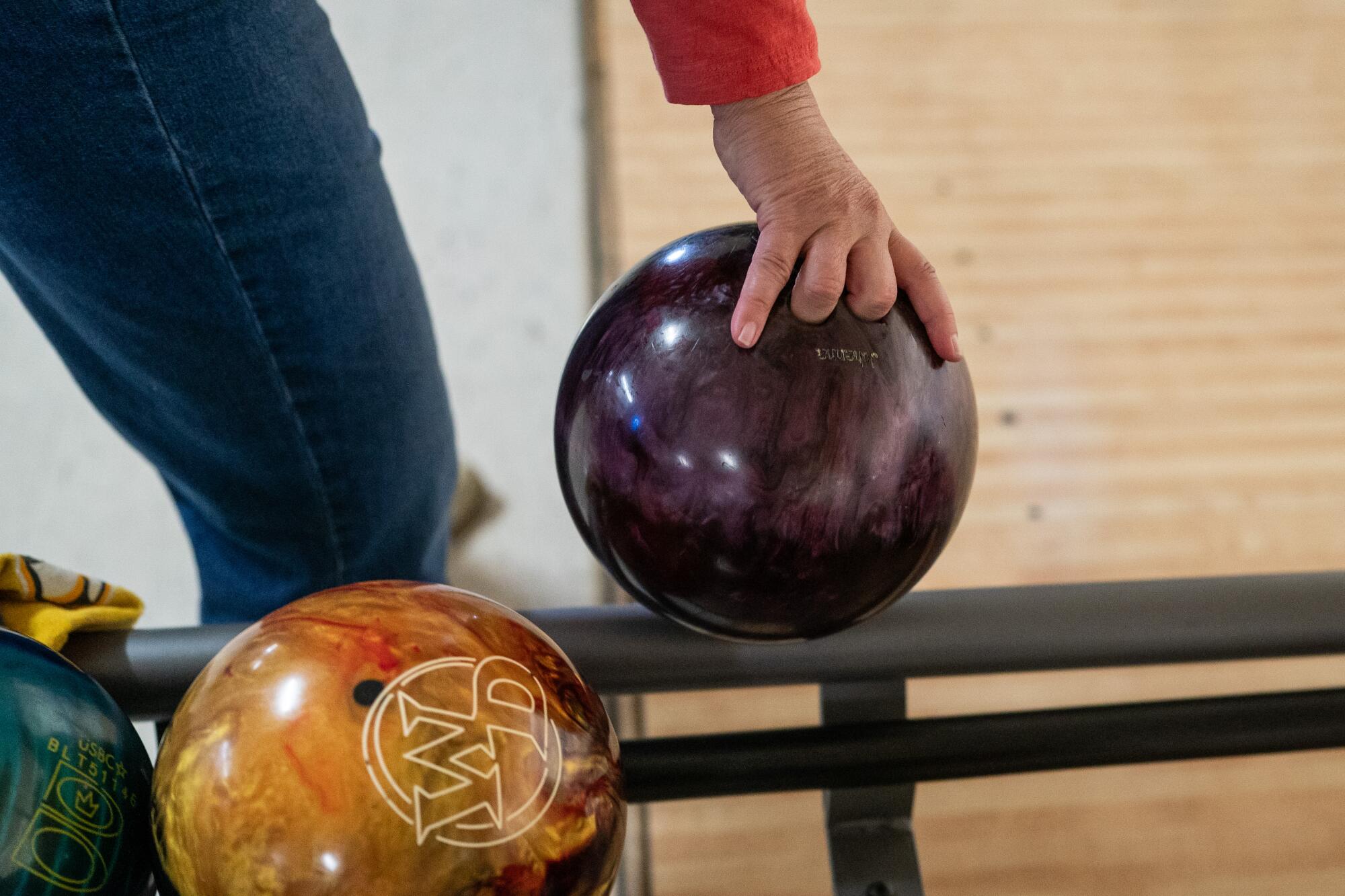
Scooping up independent houses as well as entire chains owned by AMF, Brunswick and Lucky Strike, Bowlero has amassed an empire of 328 locations across North America. For the fiscal year 2023, it reported drawing nearly 30 million customers and generating more than $1 billion in revenue.
Six of its two dozen locations in Southern California have converted to string pinsetters.
Barry Asher, a 10-time pro bowling champion who consulted on “The Big Lebowski,” says: “If we have this conversation 15 years from now, there are going to be people who have never bowled on anything but strings.”
Business has been good in the five years since Funk Bowling expanded operations to North America. Still, the German company knows that some traditionalists in this country don’t trust its string pinsetters.
“If they think they hit the pocket and there’s no strike,” executive Alex Funk says, “they blame the string.”
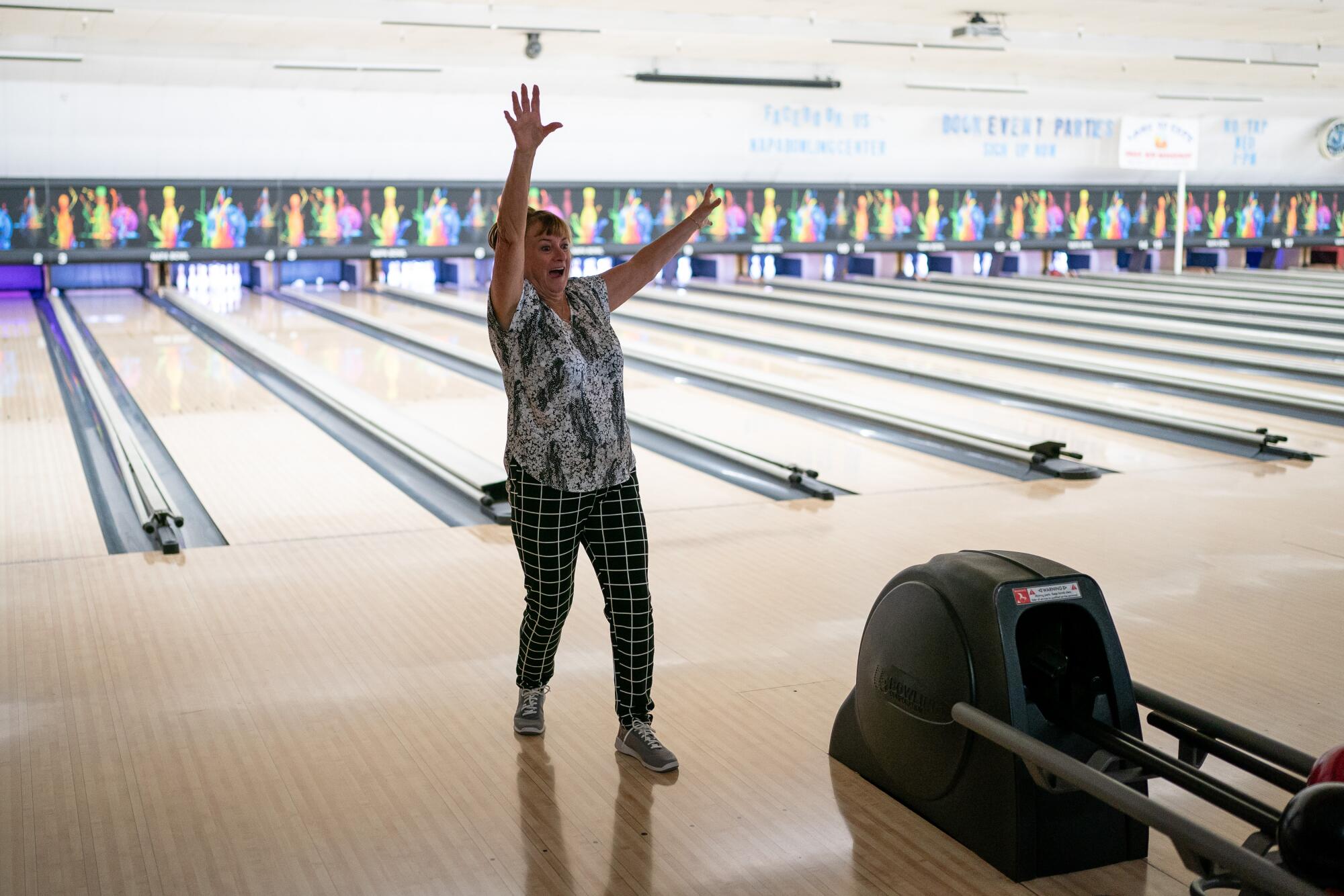
The new format has become a scapegoat for those who believe the game is losing its soul. While technology in other sports — carbon-plate running shoes, titanium golf clubs and shaped skis — aim to boost performance, they see this change as going in the opposite direction.
Diehards suspect that cost savings might also lead to scrimping on maintenance and lane conditioning, the thin layer of oil that must be applied religiously to help with precise throws. They worry about Bowlero recently acquiring the pro tour, which means string tournaments could become common on television.
Some bowling alleys might continue to resist the change or settle on a mix of string and traditional lanes, Funk says, but with his company doing conversions throughout the country, he expects the industry to come around.
“If they are trying it out, they will learn,” he says. “It becomes part of the game.”
On that recent night in the Valley, Mills and his group try to see past their initial skepticism. Helena raises her arms in celebration upon scoring one of those noncontact spares. Her husband wonders if a person might actually grow to like this kind of bowling.
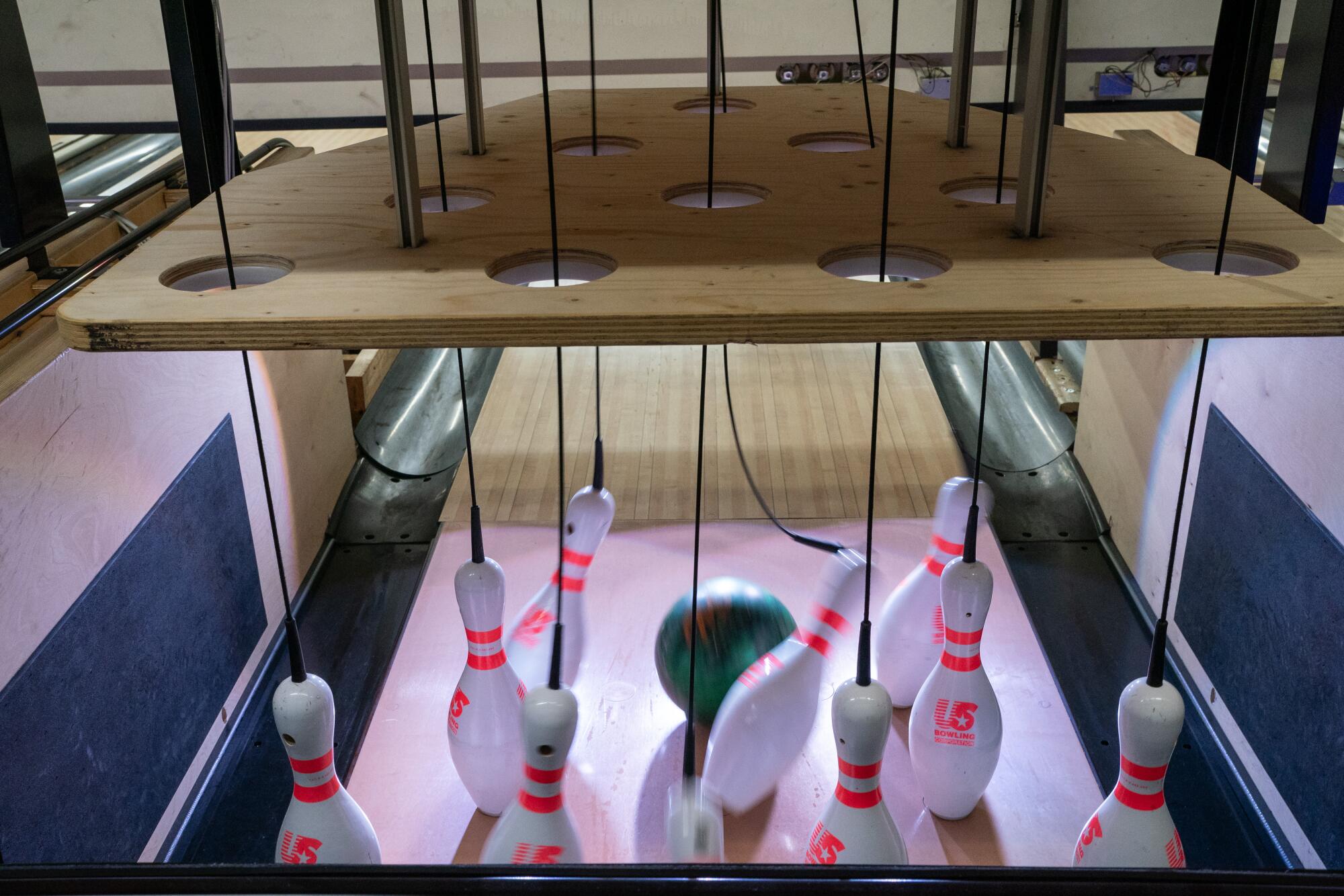
“If you put in the time,” he says, “you could probably learn how to crush these things.”
It would be a stretch to suggest they are sold on string pinsetters after just two hours. But as the night ends, Hayward finishes his last game with a turkey. That’s three consecutive strikes.
Watch L.A. Times Today at 7 p.m. on Spectrum News 1 on Channel 1 or live stream on the Spectrum News App. Palos Verdes Peninsula and Orange County viewers can watch on Cox Systems on channel 99.
More to Read
Sign up for Essential California
The most important California stories and recommendations in your inbox every morning.
You may occasionally receive promotional content from the Los Angeles Times.





